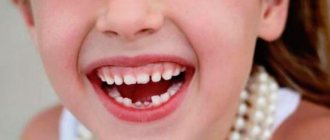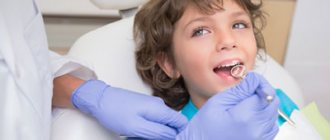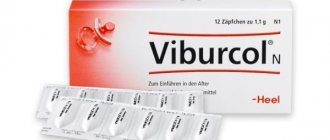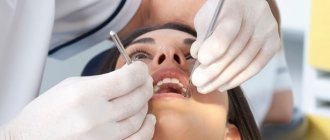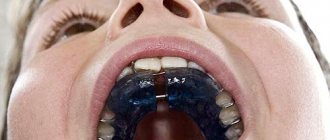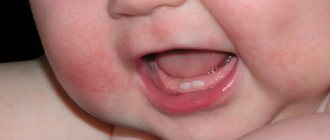962
Only the entire dental system functions as a coherent mechanism, and the chewing load between periodontal tissues and teeth is distributed evenly and proportionally.
The loss of just one dental element activates an “avalanche” of pathological changes. Only timely recovery will help to avoid irreversible consequences and similar changes in the body.
Consequences for bone structures
Reduction in the width and height of the supporting bone.
The alveolar bone of the jaw remodels depending on the forces applied to it. Whenever the function of a bone undergoes modification, significant changes occur in its internal architecture and external configuration. Bone needs stimulation to maintain its shape and density. The tooth is necessary for the development of alveolar bone, and it requires stimulation to maintain its density and volume.
When a tooth is lost, insufficient bone stimulation causes a decrease in bone density in the area with loss of width (and then height) of the bone. During the first year after tooth loss, bone width decreases by 25%, and the total height loss in the first year after tooth extraction for emergency prosthetics is more than 4 mm.
When teeth are completely missing, a removable denture does not stimulate or support the bone: it accelerates the loss of bone volume. The load from chewing is transferred only to the surface of the bone. As a result, blood supply is reduced and there is an overall decrease in bone volume.
This problem is of paramount importance, but in the past it has tended to be recognized but ignored by conventional dentistry.
Tooth loss causes remodeling and resorption of the surrounding alveolar bone and ultimately leads to atrophy of the edentulous ridges. Although the patient is often unaware of the possible consequences, they become apparent over time.
Initially, loss of bone volume leads to a decrease in bone width. The remaining narrow ridge often causes discomfort when the thin overlying tissues begin to experience stress from the soft tissue-supported denture.
The process is further accelerated if the patient wears a poorly fitting soft tissue-supported prosthesis, but patients generally do not realize this. As a rule, patients neglect regular examinations of the condition of their teeth and come to the doctor only after several years, when the artificial teeth are worn out or cannot be tolerated any longer.
Patients who wear dentures 24/7, which is about 80%, expose hard and soft tissue to greater forces, which can accelerate bone volume loss.
Increased risk of mandibular fracture due to significant loss of bone volume.
Loss of bone volume in the upper or lower jaw is not limited to the alveolar bone. Parts of the main bone of the lower jaw can also be subject to resorption (resorption, thinning), especially in its posterior parts, where severe resorption can lead to the loss of 80% of its volume. In this case, the body of the lower jaw has an increased risk of fracture even under the action of low-impact forces.
Other possible problems associated with thinning bone and partial or complete missing teeth include:
- Protrusion of mylohyoid and internal oblique ridges with increasing pressure sores;
- Protrusion of the anterior mental tubercles, bedsores and increased mobility of the prosthesis;
- Incorrect muscle attachment - near the top of the ridge;
- Vertical displacement of the prosthesis during contraction of the mylohyoid and buccal muscles;
- Shift of the prosthesis forward due to rotation of the lower jaw;
- Increased sensitivity when brushing teeth due to thinning of the mucosa;
- Increased mobility of the prosthesis and functional bedsores.
Increased load on other teeth
In the absence of any teeth, their function is taken over by neighboring teeth, and accordingly, the load on tooth enamel, crowns and roots increases significantly. This leads to the fact that teeth begin to deteriorate many times faster. For example, when removing molars, the incisors have to take on a task not provided for by nature - grinding food. As a result, longitudinal and transverse cracks appear on the enamel, the edges of the teeth wear off and turn yellow.
Increased load over time turns out to be fatal for the roots, as it provokes their increased mobility. If you do not reduce the constant pressure, bone tissue will also begin to suffer from overload.
Effects on soft tissue
As the bone loses width, then height, width, and height again, the attached gum gradually decreases. When there is severe atrophy of the lower jaw, it is usually covered by a thin layer of attached tissue or is completely absent. The gums are prone to sedimentation, which is caused by the overlying prosthesis.
Conditions such as hypertension, diabetes, anemia, and eating disorders have a devastating effect on the blood supply and quality of nutrition of the soft tissues under the removable denture. As a result, the thickness of the surface tissues gradually decreases. All this leads to the formation of bedsores and discomfort from wearing removable dentures.
A patient's tongue with edentulous ridges often enlarges, filling the space previously occupied by teeth. At the same time, the tongue is used to limit the movement of the removable denture and takes a more active role in chewing.
What to pay attention to during teething
During the period when baby teeth are replaced by permanent ones, the child becomes susceptible to infectious diseases of the oral cavity. To avoid dental problems in a child, parents need to adhere to a number of preventive rules:
- Closely monitor the quality of cleaning of the child’s oral cavity. At first, adults can clean the plaque from the surface of the enamel themselves, and then entrust the toothbrush to the baby. When choosing oral care products, you also pay attention to the composition of toothpastes. They should not contain aggressive substances that cause irritation of the mucous membranes of the mouth. Otherwise, the risk of oral infection may increase.
- Instill in your child the habit of rinsing his mouth after every meal. For this purpose, it is recommended to use special baby solutions or herbal decoctions based on oak bark, chamomile and sage. The liquid will wash away pathogenic bacteria and remove soft food deposits from the enamel surface.
- Increase the amount of calcium-rich foods in your child's diet. During the period of eruption of permanent elements, the baby’s body needs more vitamins and microelements.
After a baby tooth falls out of a child’s mouth, adults need to:
- apply a clean cotton swab to the hole;
- ask the baby to press the cotton wool with his jaw or finger;
- do not give the child water or food for several hours;
- Consult a doctor if abnormal signs appear: fever, swelling of the cheek and soft tissues of the mouth.
In the first days after the loss of a temporary unit, it is better not to give the child too hot or cold food. He should stop consuming foods with aggressive ingredients (sour vegetables and fruits, soda, crackers and chips). The wrong food can prevent the formation of a clot at the site of the hole, which in the future threatens its infection.
Aesthetic consequences of loss of bone volume due to missing teeth
The facial changes that naturally occur with age can be exacerbated and accelerated by tooth loss. Pronounced aesthetic consequences result from loss of alveolar bone. Patients do not even suspect that all these changes in soft tissues are associated with tooth loss:
- Reduction in facial height occurs due to disturbances in the vertical dimension of the alveolar bone.
- A change in the labiomental angle and deepening of the vertical lines in this area give the face a rougher appearance.
- A malocclusion develops. As a result, the chin turns forward.
- The corners of the lips droop, the patient's face has an unhappy expression.
- Due to poor support of the lip by dentures and loss of muscle tone, the border of the red border of the lips becomes thinner.
- Age-related deepening of the nasolabial philtrum and other vertical lines on the upper lip is more pronounced with loss of bone volume.
- In edentulous patients, the decrease in the tone of the facial muscles that support the upper lip occurs faster, and the lengthening of the lip occurs at an earlier age. As a result, the smile ages.
- Bone atrophy has a negative effect on the attachment of the mental and buccal muscles to the body of the mandible. The fabric sags, creating a double chin. This effect is caused by decreased muscle tone when teeth are lost.
Causes of loss of baby teeth
The main reason for the resorption of temporary elements is the resorption of the root system. Because of this, the units become mobile and fall out painlessly for the child. The process of resorption of the root system begins at the moment of formation of the root elements. The front incisors are the first to become loose and fall out of the mouth.
A small wound remains in place of the lost segment. Parents should not be afraid of this process, because a permanent tooth will soon appear in place of the temporary tooth. In children, loss of milk units is observed until the age of 9-11 years. The end of bite formation occurs at the age of 14-15 years. At this time, there will be 28 permanent elements in the adolescent’s oral cavity.
A complete dentition (32 elements) is formed on average by 25 years. Some people experience deviations in the time of eruption of the last molars, up or down. The earliest period for the appearance of wisdom teeth is 18 years, the late period is 30-40 years.
Psychological aspects of tooth loss
Psychological effects range from minimal to neurotic. It gets to the point that people are not able to wear dentures at all, and thinking that they will have to communicate with someone, they do not leave the house at all.
- Fear of an awkward situation if the prosthesis accidentally detaches.
- Losing teeth affects relationships with the opposite sex
- The occlusal (chewing) load is reduced, and the patient cannot afford to eat all the food he would like.
- Inability to eat in public.
- Speech problems. Diction problems in patients can be very serious.
Treatment methods
Modern dentistry offers several ways of high-quality dental restoration for patients.
Removable prosthetics
The products are recommended for use in the absence of any number of dental elements.
Structurally, they represent a nylon (acrylic, plastic) base with artificial units made of acrylic or polyurethane attached to it. They are fixed to the jaws using suction cups, a special cream or plates.
Removable dentures are divided into two types:
- Partially removable devices are used mainly when retaining several of your teeth in the oral cavity.
- Completely removable structures are recommended for complete edentia.
The considered prosthetic option is the most popular among patients , due to its affordable cost, lack of difficulties with eating, a short period of adaptation, and the ability to independently remove and install the prosthesis.
Among the disadvantages are the following characteristics:
- short-term operation;
- insufficient fixation;
- the occurrence of problems with speech;
- the need to adjust the daily menu;
- special and careful care;
- the inevitability of frequent replacements.
Why does odor appear from under the crown of a tooth, and how do specialists correct the situation?
In this publication we will look at the composition of dental ceramics.
Here https://zubovv.ru/protezirovanie/nesemnyie-p/osnovyi-pri-parodontoze.html find out whether prosthetics are possible for periodontal disease.
Fixed prosthetics
Just like the previous version of prosthetics, fixed dentures replace only the crown part of the tooth; one difference is that they cannot be removed independently.
Fixed dentures are indicated for installation if the following is diagnosed:
- absence of one or more consecutive dental units;
- increased abrasion of the enamel coating;
- unsatisfactory condition of the shape and shade of anatomical units.
Prosthetic structures can be installed for a specific period of time or for life. The material used for manufacturing is metal, ceramics or metal-ceramics.
Advantages of bridges and crowns:
- good aesthetic characteristics;
- strength;
- normalization of the basic function of the dentofacial apparatus;
- long-term operation.
The main disadvantages are the duration of the preparatory stage and the high price.
Implantation
This is a technique for restoring missing teeth, which involves replacing not only their crown part, but also the root system. For this purpose, implants made of zirconium dioxide or purified titanium are used.
The advantages of implantation are the following:
- maximum closeness of the appearance of the artificial tooth to the real one;
- practically unlimited service life;
- no negative impact on neighboring elements;
- resistance to high chewing loads;
- complete restoration of the functionality of the dental system.
Among the disadvantages the following indicators can be noted:
- high price;
- the duration of the entire process;
- high risk of developing postoperative complications;
- an extensive list of restrictions.
Important! The doctor determines which method of teeth reconstruction is appropriate, basing the decision on the condition of the oral cavity, the complexity of the clinical case and the patient’s preference.
In the video, see what the loss of even one tooth leads to.
